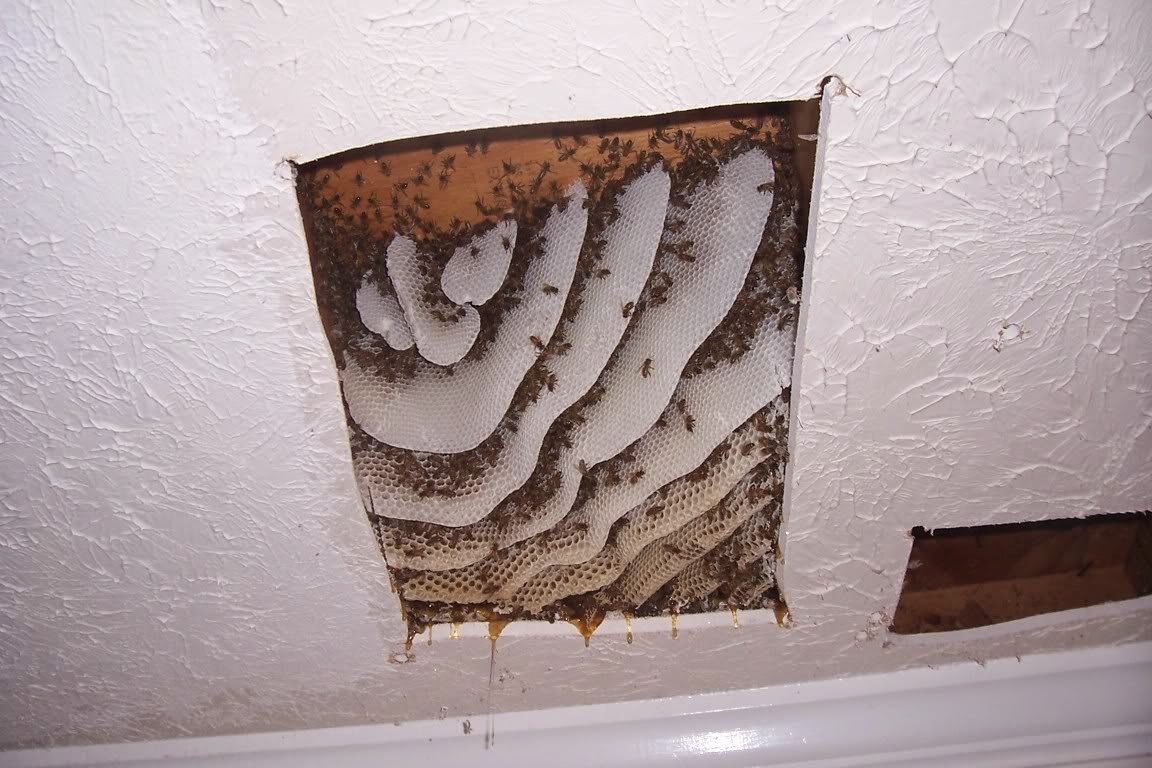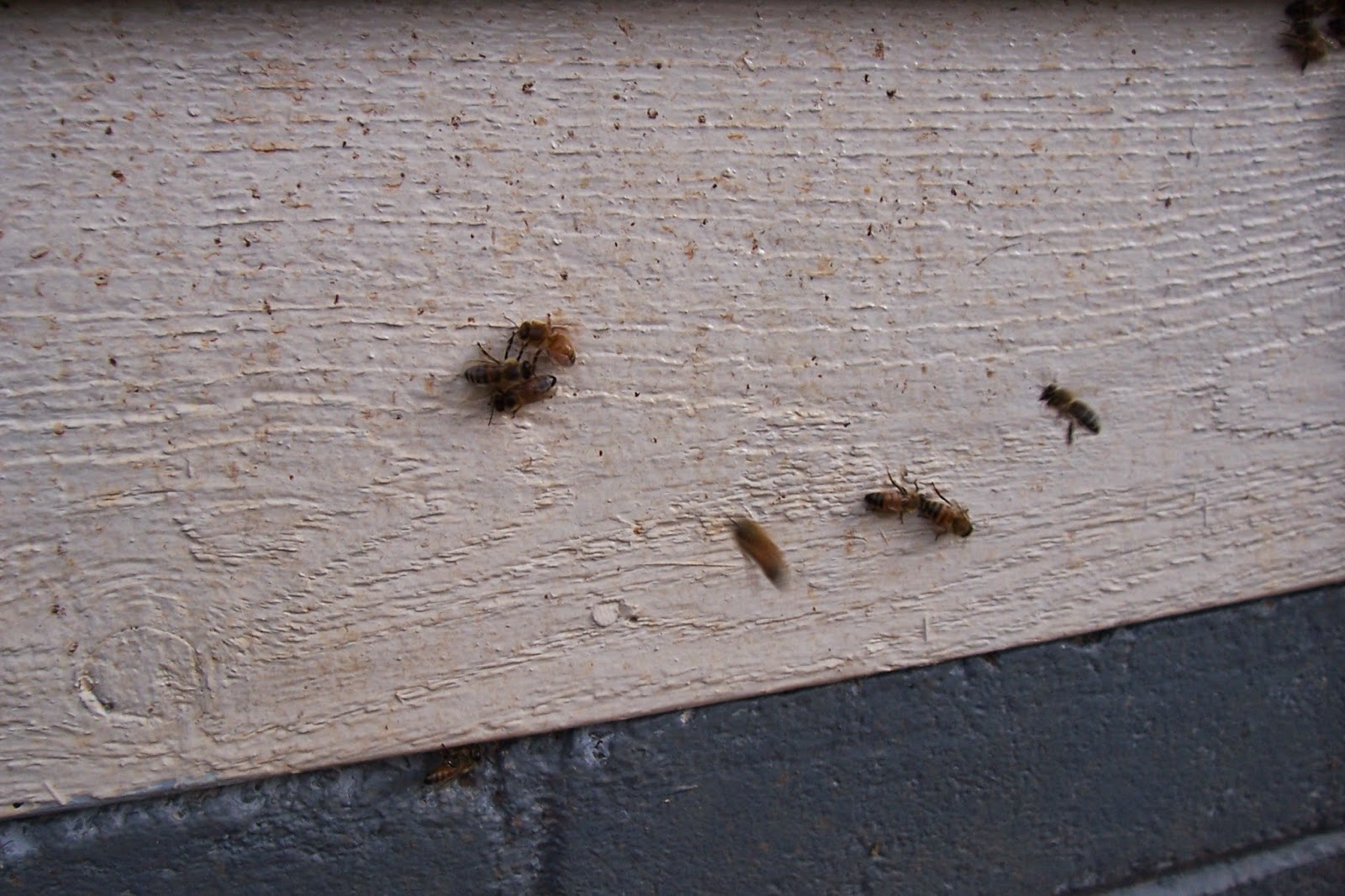Have Stinging Insect Problems? We can help.
In operation since 2006, Stingraiders has routinely handled the safe removal and disposal of bee, paper wasp, yellow jacket, giant hornet, and other stinging insect colonies in trees, homes, commercial properties and houses of prayer.
Clean, Targeted, Methodical & Guaranteed
| We use the latest FLIR© Infrared |
We guarantee that we will eliminate your infestation and will return free of charge if a colony ever reappears in a previously cleared location, period.
How much will it cost?
The cost of removal depends on the difficulty of the job. Removal of colonies which have become established in hard-to-reach areas takes considerable time and skill, and therefore is usually more expensive, depending on the situation. Typical costs can range from $150 to $300. Phone, email and text estimates are free of charge.
 |
| Click on Picture to Expand |
Examples of Removals We Have Performed:
Before You Contact Us, Please Consider The Following:
FREQUENTLY-ASKED QUESTIONS ABOUT REMOVING HONEY BEES FROM STRUCTURES
From The Department of Entomology, North Carolina Cooperative Extension LINK
Will the bees cause any damage to my house?
Potentially. Unlike other pests, such as termites or carpenter bees, honey bees do not chew or eat wood. Although the honey bees do not eat the wood, they will remove insulation and tar paper from their nesting area, allowing water and pests attracted by honey to enter after them. Occasionally, the bees can die from disease and the honey and wax left in the wall can melt and decay, causing damage.
When did they move in?
Honey bees reproduce by swarming during the months of April and May and again in early September. If you notice bees in your house at another time of year, especially summer, chances are good that they have been there since spring and you have just now noticed them.
Can I just plug up the hole and suffocate them?
If the entrance hole is plugged, the bees will look for another exit. They may find another crack or opening or they could follow light and enter your living quarters instead through gaps in baseboard, electrical outlets or vents. However, if you do succeed in trapping the bees in the wall, the entire colony will rot and decay in the wall, and it is very probable that honey will seep out of the structure once the wax melts.
Can a beekeeper come and take out the bees?
Yes. However, removing the bees usually takes a lot of time and effort once they've moved within a wall. The value of the bees, alone, is not sufficient to justify the effort and liability involved in removing them. There are very few bee specialists that know the proper procedure for removal. Often, a removal starts by finishing the job begun by an amateur.
Can the bees be trapped out or made to leave?
Trapping is sometimes done, but is only practical when the structure cannot be opened up due to brick, stone, or stucco and when removal from the inside structure is not desirable. Trapping usually takes about 6-8 weeks. Because of the time, material cost and the need for multiple visits, trapping can cost more than just opening up the structure and will not remove honeycomb, which can decay or attract swarming bees.
Is it illegal to kill honey bees?
Many pesticide labels include warnings to avoid spraying flowering plants or crops outdoors where honey bees are likely to be foraging for nectar and pollen (e.g., in a garden or planted field). In those situations, it is important to obey the labeling to help protect the bees. However, when bees invade a home, or a colony is a threat , you have the right to remove them (preferably) or to kill them if necessary. We try to save the bees as much as possible due to the high winter deathrate of the honey bees in the last 5 years. We have decided that if we are going to remove the hive, we might as well save the bees. Many others just kill them, because it is easier to avoid being stung.
Why doesn't simply spraying the bees solve the problem?
A honey bee colony within a wall can be killed with insecticide by the homeowner or a licensed pest control operator. However, if the bees have been in the wall for more than a few days, wax combs and honey may already be stored within the wall. The longer the colony has been there, the greater is the likelihood that large amounts comb and honey have accumulated. There may be as much as 100 pounds of honey within a wall by the end of spring. The remaining honey and wax could eventually ferment and run down the wall or ceiling, so it should be removed completely. The only time that killing the honey bees is preferred is when bees have nested in an inaccessible area and could pose a hazard for pets, children or allergic individuals.
Are there other house-nesting insects that might be mistaken for honey bees?
Yes. Yellow jackets sometimes build a nest in a wall cavity, as do honey bees, and many people are not able to distinguish the two insects. The difference is important because yellow jackets do no build wax combs, do not store honey, and can be much more aggressive than honeybees. The way to distinguish the two apart is that yellow jackets are smaller and fly in jerky angles. However, be careful when observing the yellow jackets, because they can be very aggressive if you are near their nest. If you see a dead one, look at the color. Yellow jackets are bright yellow with black stripes. Honey bees fly slow and will orbit their nest entrance coming and going. Honey bees are never bright yellow, but can range in colors. Yellowjackets often eat through drywall when trying to expand their hive and can be heard scratching the wall with a clicking sound.
About Stingraiders Bee Removal
Stingraiders Bee Removal began as a father and son team who originally kept a several dozen beehives as a hobby. One day, we did a favor for a neighbor by removing a few paper wasp nests, and have been helping others throughout Georgia remove and relocate bees and other stinging insects since.
Citations
Bambara, S.B., Ambrose, J. T. and Waldvogel, M. G. "Frequently-asked questions about removing honey bees from structures." Department Of Entomology North Carolina Cooperative Extension, Insect Note - ENT/rsc-12, October 1995. Web. Accessed 01/10/10. <http://www.ces.ncsu.edu/depts/ent/notes/Urban/bees-faq.htm>.
Romanov, Boris. "Bee Hives - in Infrared". Beebehavior, 20/02/05. Web. Accessed 02/11/10. <http://www.beebehavior.com/infrared_camera_pictures.php>.

















